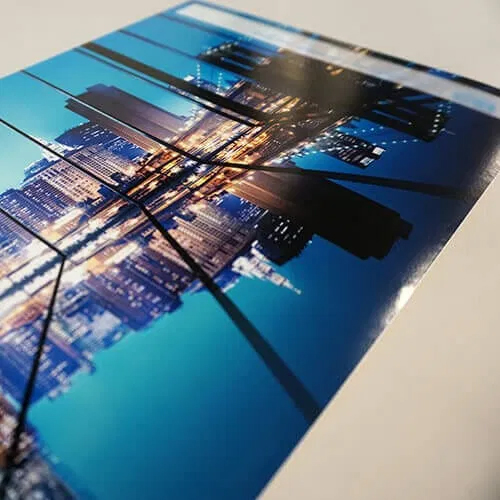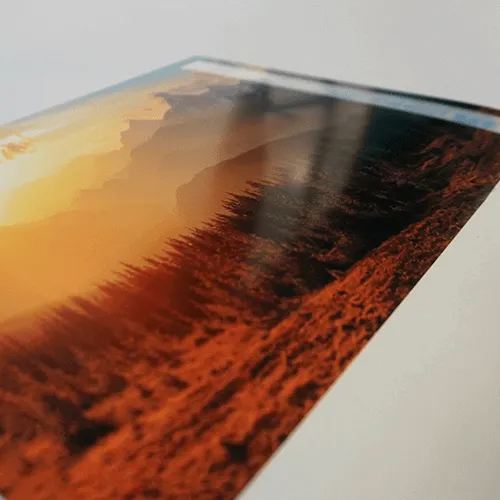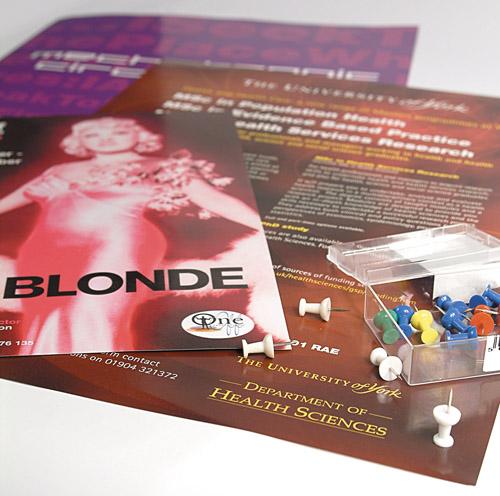Materials
Poster printing involves a number of different aspects that combine to produce a high quality product and aside from the ink and paper thickness (referred to as gsm), the paper coating will also determine the final look.
Each finish interacts differently with artificial and natural light, which affects the way the finished product is viewed by others.
Paper stock with ‘Satin’, ‘gloss’ and ‘matte’ finishes can be used in a variety of ways and to complement the way the poster is displayed and used.
To help you make the right decision about the finish you want to use for your poster we explain more about each option below.

Satin
A satin finish creates a smooth, semi-gloss image that reduces light reflection and glare while maximising use of colour and resolution.
This allows images on the poster to be seen from a wider angle without being affected by lighting. As a result, a satin finish is ideal for use behind glass shop windows or Perspex fronts where the information can be viewed by a larger number of people compared to gloss.
Satin finishes are also recommended for posters that have large areas of dark colour as it helps to draw out more defined clarity within the image.

Gloss
Opting for gloss stock will produce a vibrant and more reflective finish to your poster. This means a higher level of light reflection that really brings out the best in your colour palette.
Gloss finishes are great for promotional posters and for quickly catching people’s attention. The crisp, clear imagery enhances the image and work well for simple and bold designs. Gloss finishes are not best seen from an angle in areas of strong lighting, displaying its strengths when positioned in spaces where people can engage directly.

Matte
One of the main benefits of using matt paper is they can be read in a wider variety of settings due to the high levels of light absorption.